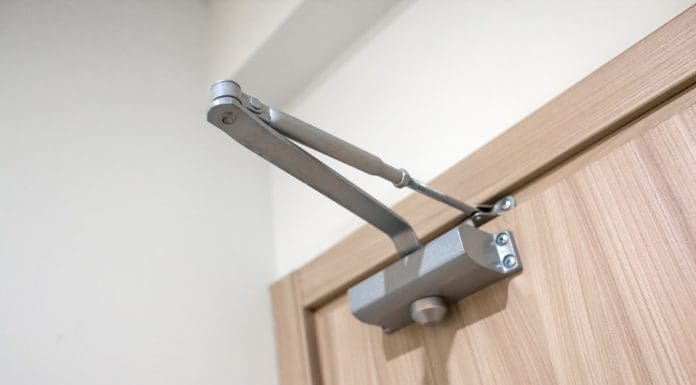For those of us who know our RRFSOs from our BS7273-4s, there’s no question that fire doors save lives; that the weight associated with operating a fire door is a necessary evil, a symptom of those innocuous-looking closers that ensure doors can shut safely
Yet when we stop to think about the people using these doors daily, perhaps we need to ask: are we expecting too much from residents?
It’s true that efforts are made to educate those outside the fire safety profession about the importance of fire doors. However, I believe much of this messaging fails to resonate. This isn’t a result of deliberate neglect or malicious intent—far from it. For most people, fire protection is seen as something handled by the fire service, rather than a responsibility they need to consider in their own everyday actions, such as when opening or closing their flat door.
The overlooked flat entry door
Consider, for a moment, the humble flat entry door. To most, it’s nothing more than a portal to their home. But behind its unassuming appearance lies an incredible amount of engineering, design, and expertise. These doors are vital to fire safety, crafted to withstand flames and protect lives. Their ability to close securely, preserving their integrity, is a cornerstone of modern fire protection. But do residents understand this? More importantly, do they care?
This is where the problem lies. Disengaged or outright removed door closers are becoming an all-too-common sight, particularly in social housing and general-purpose flats. To many residents, these doors are just a heavy, inconvenient barrier—a “bully” to contend with every time they come and go. What’s their solution? Out comes a screwdriver, off comes the closer, and suddenly, life feels that little bit easier. The door becomes lighter and less of a daily hassle.
It’s easy to assume that only the elderly or those with disabilities would struggle with fire doors. However, this isn’t the case. Heavy fire doors frustrate people across all demographics, regardless of age or ability. They are a universal inconvenience, and as a result, they are universally tampered with.
How widespread is the problem?
Recent conversations with customers have revealed just how widespread this issue is. One local authority in Southern England conducted a survey of 6,000 flat entry doors and discovered that 1,700 of them—over 28%—had missing or disengaged closers. Another customer, a housing association, shared even more alarming statistics, reporting that 40% of flat doors in their general needs accommodation had missing closers.
These aren’t isolated incidents. In the analysis of survivors’ testimonies from the Grenfell Tower fire, it was revealed that 56% of doors had missing self-closing devices. Similarly, the tragic fire at Twin Parks in New York City spread rapidly because the door to the flat where the fire began failed to close after residents fled.
The implications of these findings are stark. A single missing closer can compromise the safety of an entire building, putting countless lives at risk.
A call for change
This growing problem demands action. One potential solution is the widespread adoption of free-swing devices. These devices allow doors to move freely, removing the resistance typically caused by door closers, until they receive a signal from a fire alarm to engage and close. By eliminating the daily struggle of pushing a heavy door, free-swing devices reduce the temptation for residents to tamper with their doors.
However, implementing such systems is not without its challenges. The most significant hurdle is that free-swing devices require a signal from a fire alarm to operate. In many general needs housing blocks, no central fire alarm system exists. Instead, these buildings rely on individual flat detectors, designed to support a “stay-put” policy and provide 60-minute fire resistance.
So, how do we make this work? Could other systems, such as sprinklers or automatic opening vent (AOV) systems, be used to trigger free-swing devices in an emergency? If detectors within individual flats could communicate with these devices, it might offer a practical solution.
Navigating the standards
It’s worth noting that BS 7273-4, the standard governing these systems, does allow for variations. Clause 6 states that deviations from the standard are permitted, provided they are based on a suitable risk assessment and agreed upon by all relevant parties, including the Responsible Person, residents, installers, and fire authorities. However, adopting these variations requires careful planning, collaboration, and, perhaps most importantly, confidence.
Even with these provisions, BS 7273-4 is widely regarded as one of the more complex fire safety standards to comply with. Tackling the issue of tampered or removed door closers within its framework is undoubtedly a challenge. But it’s a challenge we must face if we are to prevent further tragedies and ensure the safety of our buildings.
Join the Conversation
In reality, finding a compliant solution for this problem can be tricky, with BS 7273-4 already known for being an awkward standard to comply with. The issue of how to effectively deal with the problem of disengaged and tampered closers is a head-scratcher, for sure, and I by no means am suggesting that we’ve completely solved it. That’s why I want to hear from you. If you have any thoughts or comments on how we as an industry can deal with this problem, I’d love to hear from you. Feel free to send your thoughts to me at pete.davies@fireco.uk and let’s see if we can figure this one out.
The post Some of our door closers are missing: The weight of the issue in fire safety appeared first on Planning, Building & Construction Today.


